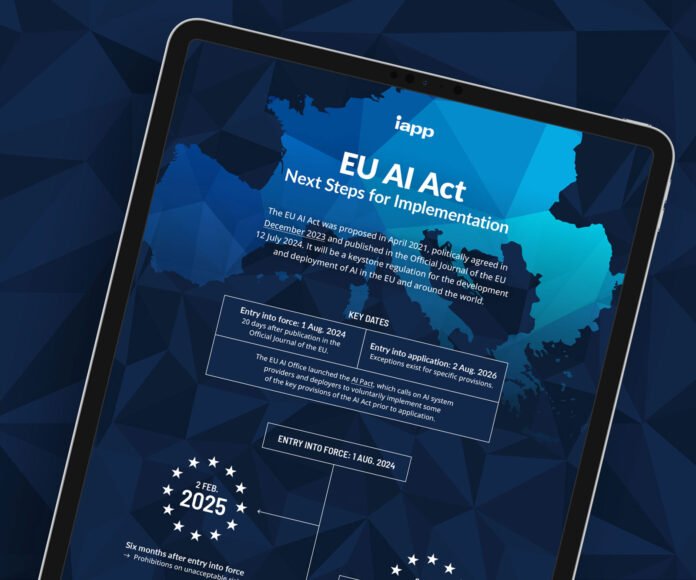Introduction to the AI Act
The AI Act represents a significant milestone as the world’s first comprehensive legislation addressing artificial intelligence. Introduced by the European Union, this act aims to create a unified regulatory framework to govern the development and implementation of AI technologies. Its primary objectives, as articulated in Article 1, focus on ensuring high safety standards, safeguarding fundamental rights, and fostering innovation across AI systems within the EU. This holistic approach is designed to balance the advancement of AI capabilities with the necessity of ethical and responsible governance.
A prominent aspect of the AI Act is its tiered classification system, categorizing AI systems based on their risk levels. This classification ranges from minimal risk to unacceptable risk, enabling the EU to impose stricter regulations on higher-risk applications while allowing for greater flexibility in areas with lower risk. As artificial intelligence continues to evolve and integrate into various sectors, such as healthcare, transportation, and finance, this regulatory framework is critical in addressing potential risks and ensuring public trust in AI technologies.
The timeline of the AI Act’s development underscores the EU’s commitment to addressing rapidly advancing AI technologies. The act was proposed in April 2021 and has undergone extensive discussions involving stakeholders, policymakers, and regulatory bodies to refine its provisions and ensure its effectiveness. Following this preparatory phase, the AI Act is set to come into force on August 1, 2024, marking a pivotal moment in the regulatory landscape for artificial intelligence in Europe. This exciting development signals the EU’s dedication to setting a global benchmark for the ethical and safe deployment of AI systems.
Understanding AI Systems and Risk Classification
The AI Act introduces a comprehensive framework for defining and regulating artificial intelligence systems within the European Union. The legislation delineates what constitutes an AI system, emphasizing the need for transparency, accountability, and risk management in the deployment of AI technologies. As outlined in the Act, AI systems can be categorized into four risk classifications: minimal risk, specific risk, high-risk, and prohibited systems. This classification is pivotal in guiding the compliance requirements for developers and users of AI technologies.
Minimal risk AI systems pose little to no threat to individuals or society. These systems are subject to minimal oversight, allowing innovation to flourish without stringent regulatory barriers. Conversely, specific risk AI systems may require limited additional compliance measures, aimed primarily at ensuring safety and ethical adherence.
High-risk AI systems are at the center of the regulatory framework, as they can significantly impact individuals’ rights and safety. For instance, AI technologies employed in critical sectors, such as healthcare, transportation, and law enforcement, unveil the heightened importance of transparency obligations. These obligations necessitate that businesses using high-risk systems ensure extensive documentation and monitoring to mitigate risks. Notably, particular attention is directed towards AI applications capable of generating deepfakes, as they pose substantial ethical and societal concerns.
From August 2, 2027, businesses that utilize high-risk AI systems will be required to comply with specific obligations designed to ensure operational integrity and protect user rights. These requirements include robust data governance measures, risk assessments, and continuous monitoring of AI outputs to prevent adverse effects. By establishing a clear risk classification system, the AI Act aims to strike a balance between encouraging innovation and safeguarding public interests, fostering a sustainable AI landscape in the EU.
Challenges for Businesses and Implementation Strategies
The implementation of the AI Act presents significant challenges for businesses operating within the European Union. One of the primary concerns is the potential for financial penalties associated with non-compliance. The Act outlines stringent regulations, and organizations that fail to adhere to these guidelines may face substantial fines, which can disrupt not only their financial stability but also their reputation in the market. This creates an urgent need for businesses to proactively assess their AI deployments and ensure they meet the specified regulatory requirements.
Another critical challenge is the necessity for companies to identify the origins of their AI systems and evaluate them across different risk categories. The AI Act categorizes AI technologies based on their potential risk to users and society, thus requiring organizations to take a thorough inventory of the AI solutions they use, categorize them appropriately, and implement safeguards as dictated by their risk tier. This evaluation process is essential for compliance but can be complex and resource-intensive, especially for organizations with extensive AI applications.
The evolving landscape of regulations further complicates the situation. As member states may introduce additional layers of regulation or guidelines, businesses must remain agile and adapt to these changes to maintain compliance. This requires ongoing training, a strong understanding of the legal framework, and investment in compliance infrastructure.
In this environment, frameworks such as ISO 42001 can significantly aid organizations in navigating the complexities of the AI Act. By providing standardized guidelines for AI governance, ISO 42001 helps businesses implement best practices, conduct audits, and ensure compliance with existing and future regulations. Employing this framework can lead to more effective management of AI risks and enhance overall trustworthiness in companies’ AI strategies.
The Future of AI Regulation in the EU and Beyond
The recent enactment of the AI Act signifies a pivotal moment in the regulatory landscape of artificial intelligence within the European Union. It is expected to lay the groundwork for future national legislation that will align with the European regulatory framework, establishing a cohesive approach to AI governance across member states. This change aims to create a more predictable environment for businesses operating in the AI sector, as well as for innovators and researchers seeking to explore the boundaries of technology.
A critical aspect of the AI Act is the necessity for clear interpretations of its provisions. Ambiguities in the legal text could lead to varied implementations across countries, potentially resulting in a fragmented regulatory landscape. Therefore, it is essential that both the European Commission and national governments provide guidance to ensure that the Act functions as intended while simultaneously respecting the diverse legal traditions within the EU. Such clarity will enable organizations to navigate the regulatory framework more effectively, thereby minimizing compliance costs and fostering innovation.
Moreover, the AI Act holds the potential to establish ‘AI made in EU’ as a global quality standard. Given Europe’s emphasis on high ethical standards and commitment to fundamental rights, products and services developed under this framework could enjoy a competitive edge in international markets. Other countries may look to the EU as a benchmark for their own AI regulations, thus amplifying the impact of the Act far beyond European borders.
In reflecting on these developments, it is essential to strike a delicate balance. The dual objectives of ensuring legal certainty and protecting fundamental rights must coexist with the need to promote innovation. Rigorous regulations and the promise of AI can coexist if framed within a supportive ecosystem that nurtures technological advancement without compromising ethical principles.





